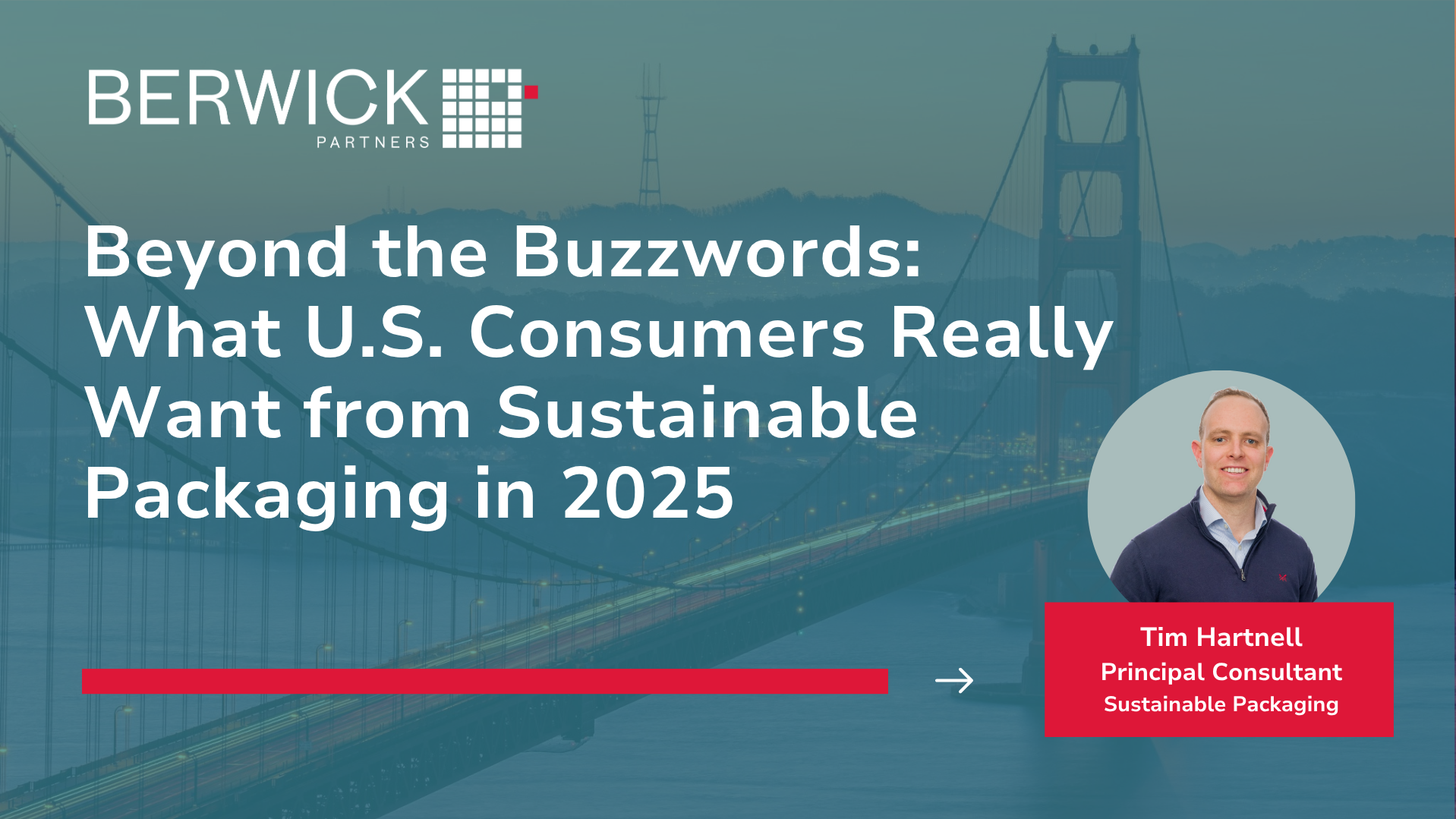Beyond the Buzzwords: What U.S. Consumers Really Want from Sustainable Packaging in 2025
We’re halfway through 2025, and in the United States, the conversation around sustainable packaging has never been louder. But beneath the noise, a more grounded, nuanced picture is emerging.
Sustainability matters to the American consumer. But it’s not the only thing. Or even the first thing.
What’s rising to the surface in conversations with packaging leaders, brand owners, and consumers is this: sustainability must live alongside performance, price, and practicality. Consumers want packaging that works – keeping products safe, fresh, and convenient – while also aligning with their values.
Ultimately, the reality is more nuanced than a single trend or headline. Here are 6 key themes that are shaping what consumers in the U.S. really expect from sustainable packaging today:
-
Function still rules
Hygiene, food safety, and shelf life remain the top packaging priorities globally. Especially in food, beverage, and personal care, a green pack that underdelivers on function simply won’t cut it.
-
Recyclability is the gold standard
Across major markets, recyclability is the most valued sustainability trait, more than compostability or biodegradability. But consumer understanding is patchy. Many still don’t know what can be recycled or how, and inconsistent labelling adds to the confusion.
-
Price sensitivity is real and rising
While many consumers say they’re willing to pay more for sustainable packaging, that willingness has limits. Inflation and economic uncertainty have made value-for-money a dominant concern. The premium must come with visible, tangible value, not just a green leaf on the label.
-
Trust is fragile
Consumers expect brands to lead on sustainability, but they’re also more sceptical. Greenwashing is a growing concern, and some consumers actively avoid brands they perceive as disingenuous. Transparency, traceability, and third-party validation are becoming essential.
-
Demographics matter
Younger consumers are the most sustainability-conscious and most willing to pay more. But older generations are catching up, with many also making eco-conscious choices.
-
Material perceptions vary by region
Glass and paper are widely seen as sustainable, but only in countries where recycling infrastructure supports them. PET bottles, for example, are considered sustainable in some regions due to high recovery rates, but not everywhere.
For those shaping packaging strategy, this raises the bar. It’s no longer just about designing packaging that protects or performs. Brands are being asked to balance impact, integrity, and intimacy with the consumer.
This means:
- Designing with recyclability and clear consumer guidance from the start
- Making smarter material choices without compromising cost or convenience
- Partnering across the value chain, from converters to retailers, to build trust and infrastructure
- Communicating progress with honesty, not hype
The stakes are rising. The consumer is watching, but with more pragmatism than idealism. In 2025, success will belong to the brands that bring sustainability into the real world, not as a message, but as a measurable outcome.




